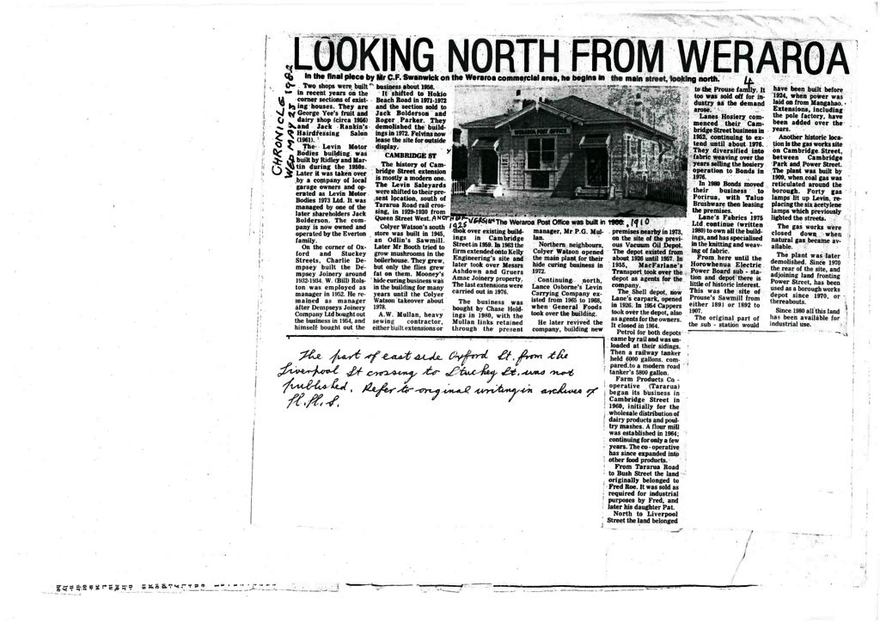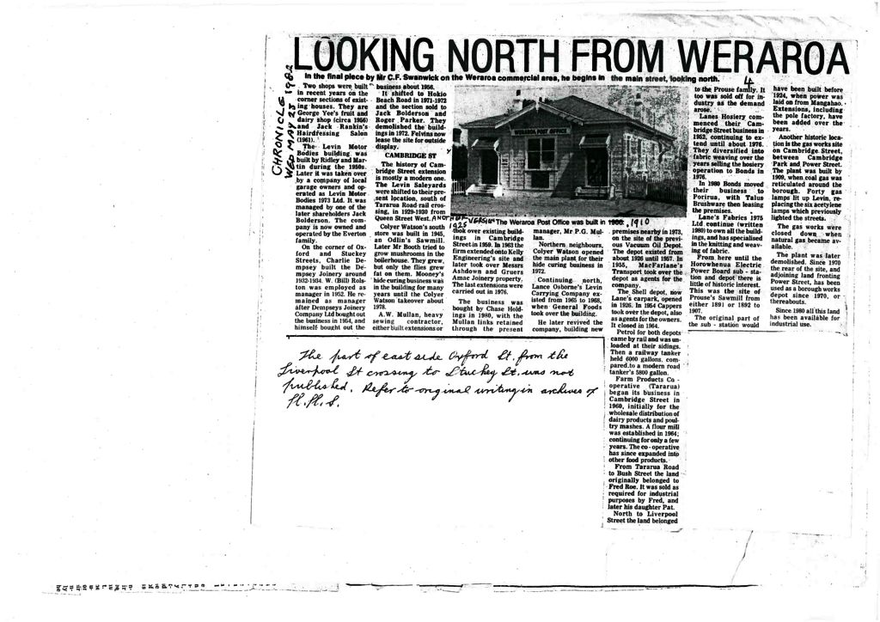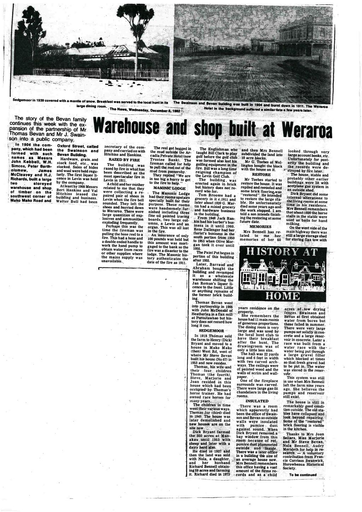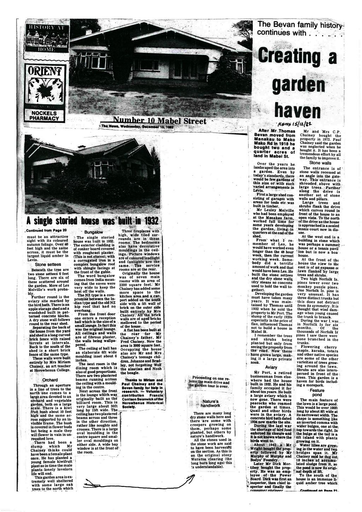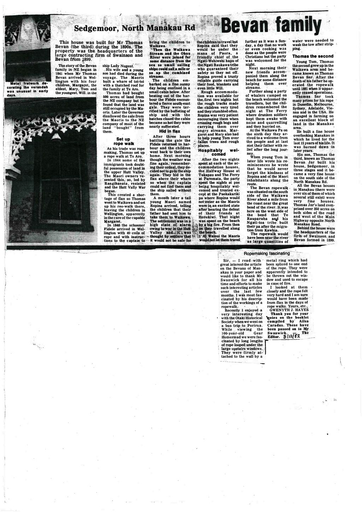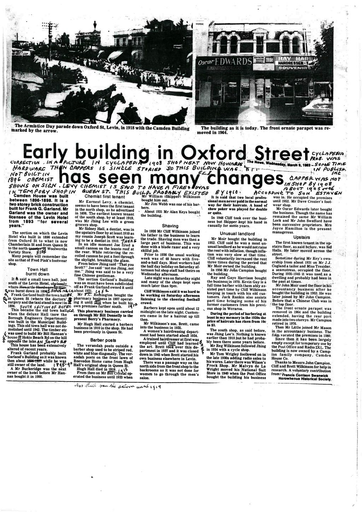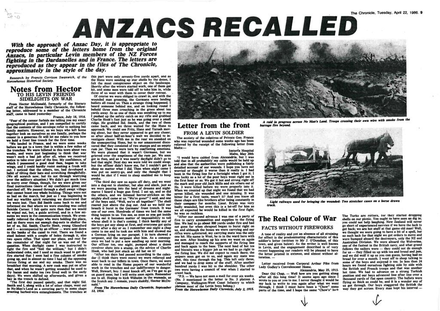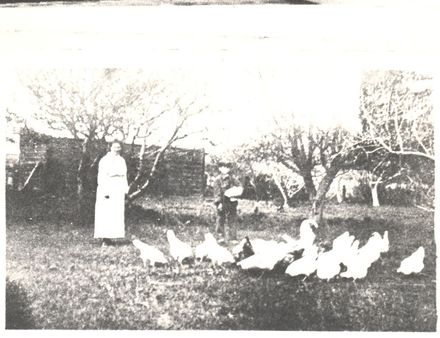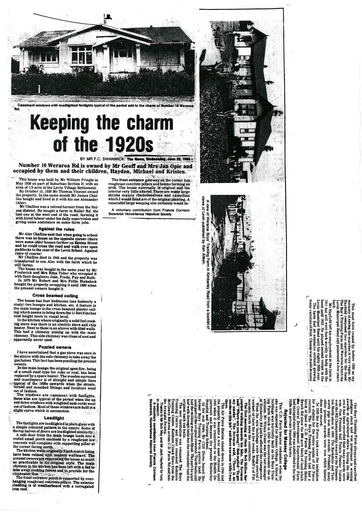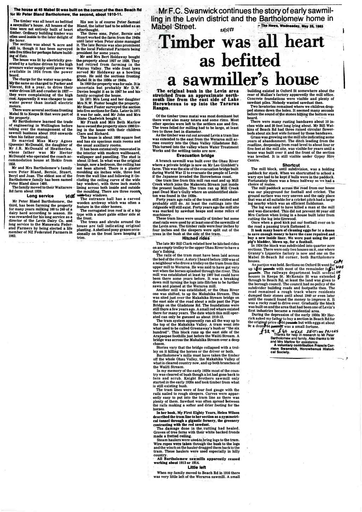Looking north from Weraroa
- Description
 Photo at left shows The Weraroa Post Office - built in 1910.
Photo at left shows The Weraroa Post Office - built in 1910.The Levin Motor Bodies building was built by Ridley and Martin during the 1950s. Later it was taken over by a company of local garage owners and operated as Levin Motor Bodies 1973 Ltd. It was managed by one of the later shareholders Jack Bolderson. The company is now owned and operated by the Everton family.
On the corner of Oxford and Stuckey Street, Charlie Dempsey built the Dempsey Joinery around 1932-1934, W. (Bill) Rolston was employed as manager in 1952. He remained as manager after Dempseys Joinery Company Ltd bought out the business in 1954, and himself bought out the business about 1956.
It shifted to Hokio Beach Road in 1971-1972 and the section sold to Jack Bolderson and Roger Parker. They demolished the buildings in 1972. Felvins now lease the site for outside display.
CAMBRIDGE STREET
The history of Cambridge Street extension is mostly a modern one. The Levin Saleyards were shifted to their present location, south of Tararua Road rail crossing, in 1929-1930 from Queen Street West.
Colyer Watson’s south store was built in 1945, an Odlin’s Sawmill. Later Mr Booth tried to grow mushrooms in the boiler house. They grew, but only the flies grew fat on them. Mooney’s hide curing business was in the building for many years until the Colyer Watson takeover about 1978.
A.W.Mullan, heavy sewing contractor, either built extensions or took over existing buildings in Cambridge Street in 1959. In 1963 the firm extended onto Kelly Engineering’s site and later took over Messrs. Ashdown and Gruers Amac Joinery property. The last extensions were carried out in 1976.
The business was bought by Chase Holdings in 1980, with the Mullan links retained through the present manager, Mr P.G.Mullan.
Northern neighbours, Colyer Watson opened the main plant for their hide curing business in 1972.
Continuing north, Lance Osborne’s Levin Carrying Company existed from 1965 to 1968, when General Foods took over the building.
He later revived the company, building new premises nearby in 1973, on the site of the previous Vacuum Oil Depot. The depot existed from about 1926 until 1957. In 1955, MacFarlane’s Transport took over the depot as agents for the company.
The Shell depot, now Lane’s car park, opened in 1926. In 1954 Cappers took over the depot, also as agents for the owners. It closed in 1964.
Petrol for both depots came by rail and was unloaded at their sidings. Then a railway tanker held 6000 gallons, compared to a modern road tanker’s 5800 gallons.
Farm Products Co-operative (Tararua) began its business in Cambridge Street in 1960, initially for the wholesale distribution of dairy products and poultry mashes. A flour mill was established in 1964; continuing for only a few years. The co-operative has since expanded into other food products.
From Tararua Road to Bush Street the land originally belonged to Fred Roe. It was sold as required for industrial purposes by Fred, and later his daughter Pat.
North to Liverpool Street the land belonged to the Prouse family. It too was sold off for industry as the demand arose.
Lanes Hosiery commenced their Cambridge Street business in 1952, continuing to extend until about 1976. They diversified into fabric weaving over the years selling the hosiery operation to Bond’s in 1976.
In 1980 Bonds moved their business to Porirua, with Talus Brushware, then leasing the premises.
Lane’s Fabrics 1975 Ltd continue (written 1980) to own all the buildings, and has specialised in the knitting and weaving of fabric.
From here until the Horowhenua Electric Power Board sub-station and depot there is little of historic interest. This was the site of Prouse’s Sawmill from either 1891 or 1892 to 1907.
The original part of the sub-station would have been built before 1924, when power was laid on from Mangahao. Extensions, including the pole factory, have been added over the years.
Another historic location is the gas works site on Cambridge Street, between Cambridge Park and Power Street. The plant was built by 1909, when coal gas was reticulated around the borough. Forty gas lamps lit up Levin, replacing the six acetylene lamps which previously lighted the streets.
The gas works were closed down when natural gas became available.
The plant was later demolished. Since 1970 the rear of the site, and adjoining land fronting Power Street, has been used as a borough works depot since 1970, or thereabouts.
Since 1980 all this land has been available for industrial use.
Identification
- Date
- May 25, 1982
Taxonomy
- Community Tags

